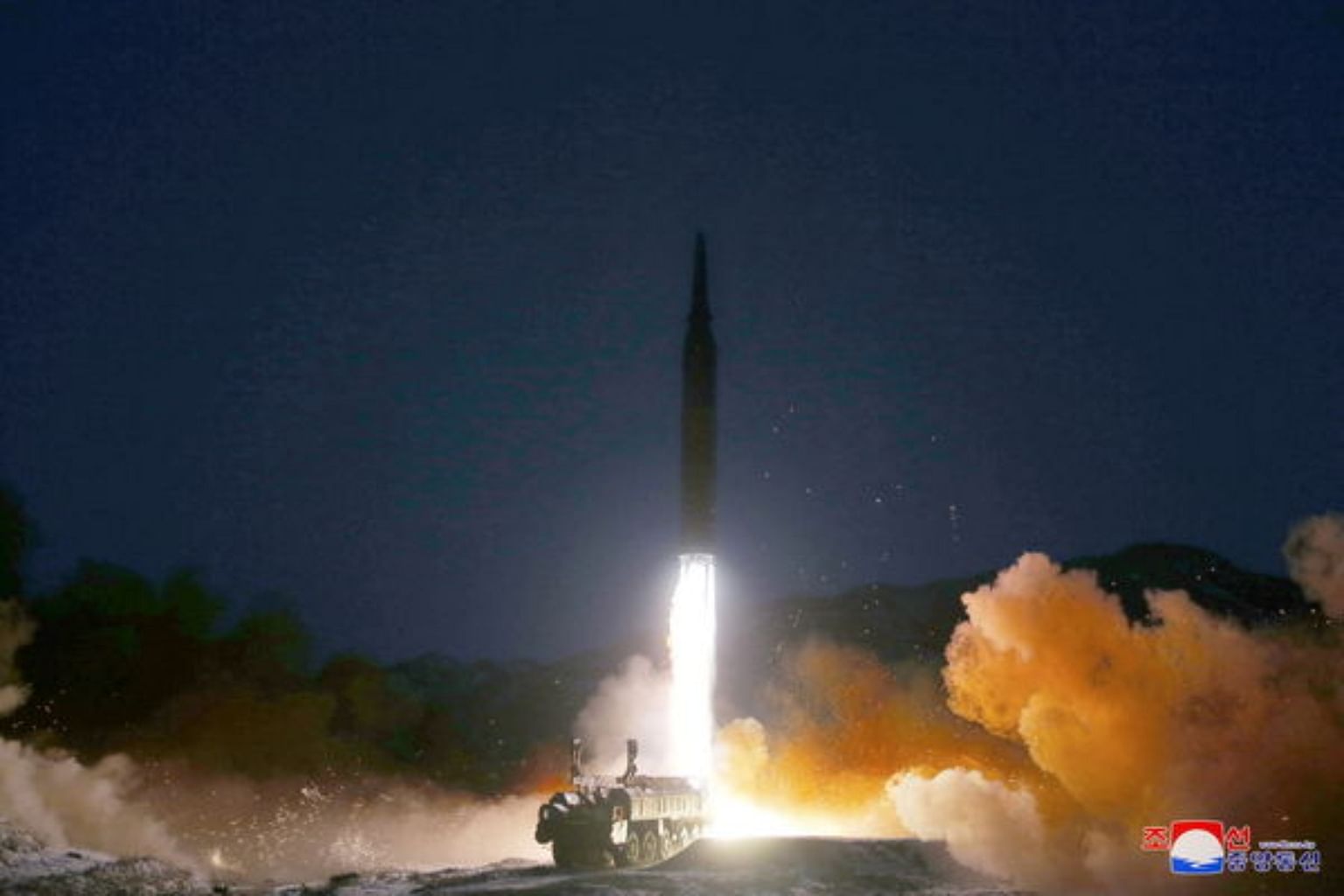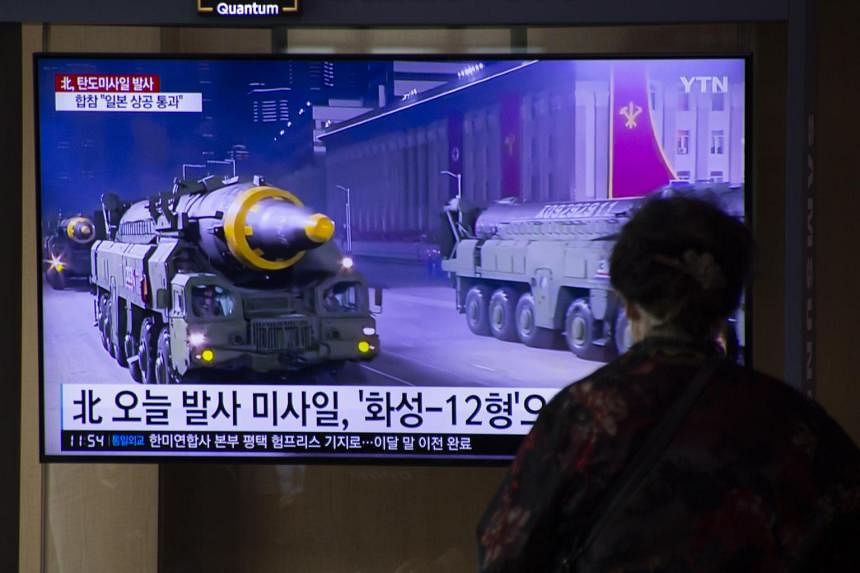SEOUL - The North Korean test flight on Tuesday, which sent a missile soaring over Japan, underscored the nuclear-armed state's rapidly advancing arsenal amid stalled denuclearisation talks.
Tuesday's ballistic missile was the 39th launched by North Korea in 2022. Its record schedule began in January with the launch of a new missile which Pyongyang said was hypersonic, and went on to include long-range cruise missiles; short-range ballistic missiles fired from rail cars, airports, and a submarine; and its first intercontinental ballistic missile (ICBM) launches since 2017.
Here are some of the key missile capabilities that North Korea is developing.
Long-range launches
North Korea claimed in March to have successfully tested its largest ICBM ever, the massive Hwasong-17.
South Korean and US officials dispute that, saying it appears that the North, in fact, fired an older Hwasong-15 ICBM, while some apparent Hwasong-17 tests ended in failure.
In any case, that March test was its highest missile flight to date, sending an ICBM more than 6,000km into space. On Tuesday, the country demonstrated its longest-range test when it fired an intermediate-range missile over Japan and into the Pacific Ocean some 4,600km away.
The return to long-range testing has raised the stakes for the United States and other distant countries that had played down some of North Korea's short-range weapons.
Manoeuvrable missiles
Many of North Korea's most recent short-range ballistic missiles (SRBMs) such as its KN-23 and KN-24 are designed to fly on a lower, "depressed" trajectory and potentially manoeuvre, complicating efforts to detect and intercept them.
North Korea said it tested a new type of "hypersonic missile", which usually fly at lower altitudes than ballistic missiles at more than five times the speed of sound - or about 6,200km per hour.
Despite their name, analysts say the main feature of hypersonic weapons is not speed but their manoeuvrability, which can help them avoid interception.
Analysts also say that the size of the Hwasong-17 as well as work on what North Korea says is technology for controlling satellites, suggests that Pyongyang is looking to tip its ICBMs with multiple, manoeuvrable nuclear warheads and decoys that can help them evade defences.
Diverse locations
The year 2022 has seen North Korea test fire missiles from different locations and launch platforms in what analysts say is an effort to simulate a conflict and make it difficult for enemies to detect and destroy the missiles.
In January, North Korea launched a pair of SRBMs from a train near the northern border with China, in what state media said was a short-notice drill aimed at boosting the proficiency of the troops operating the missiles.
Despite the country's limited and sometimes unreliable rail network, rail-mobile missiles are a relatively cheap and efficient option to improve the survivability of their nuclear forces.
North Korea also conducted tests from the international airport outside Pyongyang, and launched a new, short-range missile from its experimental missile submarine. It has also promised that an operational missile submarine would soon be deployed.

Tactical nuclear weapons
If North Korea resumes nuclear testing, it could include development of smaller "tactical" warheads meant for battlefield use and designed to fit on short-range missiles, according to South Korean officials.
In April, the North test-fired a new, short-range missile that state media said was for "enhancing the efficiency in the operation of tactical nukes", marking the first time it has linked a specific system to tactical nuclear weapons.
Analysts say putting small warheads on short-range missiles could represent a dangerous change in the way North Korea deploys and plans to use nuclear weapons, allowing Pyongyang to field more of them.
Instead of threatening a few cities to deter an attack, it could use them against a wide range of military targets in the South. REUTERS


